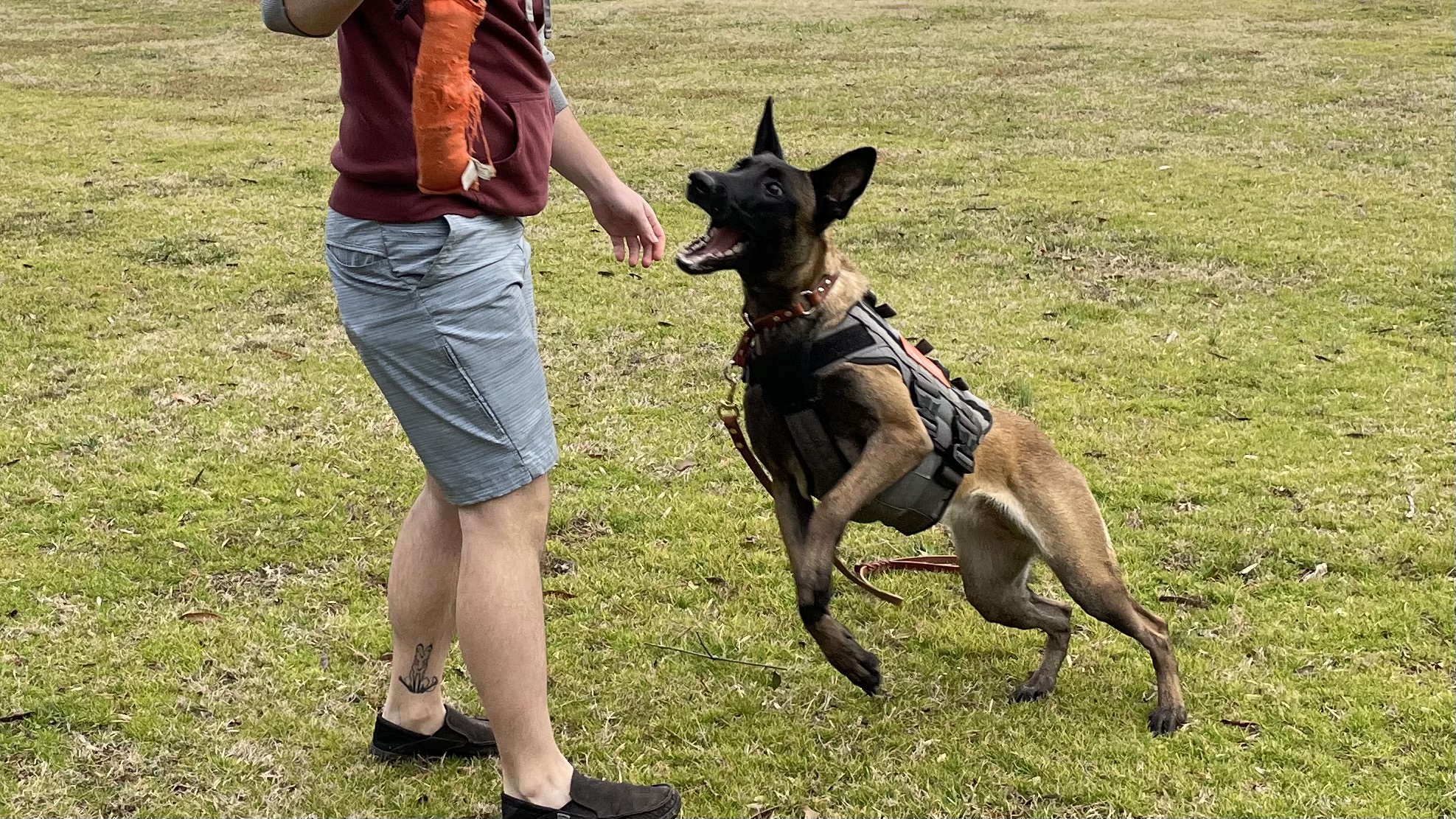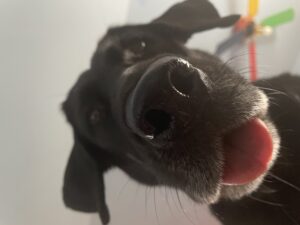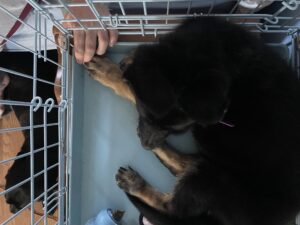All solid behaviors are built on a solid history of reinforcement – whether that comes in the form of a treat from your pouch or snagging a burger from the countertop when your back is turned. The majority of trainers and dog owners choose to use food as their primary method of reinforcement because food is small, portable, cheap, accessible, consumed quickly, and generally quite motivating. But that doesn’t mean food is the end-all-be-all of rewards in training! Anything your dog is willing to work for is useable as a reinforcer.
Here are some things to remember about training with reinforcers other than food:
- It tends to take longer to reinforce with toys or life rewards compared to food. Food can be consumed in 1-2 seconds, but an effective toy reinforcement event has to last long enough for your dog to enjoy themselves. Cut them too short and you’re no longer reinforcing your dog – you’re just frustrating them.
- It takes some preparation to be useful in training scenarios. It’s not as simple as just giving your dog a tennis ball or a rope tug, unless you’re doing a single-rep session! What happens after your dog has their ball? Do they enjoy dropping it? If not, you’ve got some work to do before you can use it reliably in a session without derailing your plans.
- Toys & play are often best used with higher-energy behaviors. The feelings your dog associates with the reward you’re using will bleed into the feelings they have about the behavior you’re rewarding them for. Teaching a long-duration settle behavior is way easier if you’re using plain Cheerios – rewarding your dog for relaxing with a rousing game of fetch every few minutes does not lend itself to teaching your dog to chill out!
- Using them well is a more advanced skill and can be difficult to use for teaching the mechanics of skills without a lot of practice and precise handling. Food is easy to deliver and doesn’t skyrocket their arousal levels like toys tend to do, and it can provide clarity for both the trainer and the dog with its transactional nature. “Sit” ⇨ [dog sits] ⇨ “Yes!” [treat] is a much easier sequence than “Sit” ⇨ [dog sits] ⇨ “Get it!” [toy presented in correct position] ⇨ [dog plays with handler] ⇨ [handler calls dog back to them if necessary] ⇨ “Drop it!” ⇨ [dog drops it] ⇨ “Yes!” ⇨ [reward drop-it with next rep, same or new toy, or food] ⇨ Next rep.
- The dog chooses the reinforcer. If your dog loves tug but hates keep-away, then you get to use tug as your reinforcer. If your dog doesn’t like toys but only likes to be chased, then you get to chase your dog as your reinforcer. For something to be an effective reinforcer, your dog has to enjoy it enough to be willing to work for it.
Toys & Play Reinforcement
The first step in utilizing alternative reinforcement is to learn your dog! What makes them tick? Do they like tug, fetch, keep-away? Do they enjoy barking for the sake of it? Do they love to shred and destroy toys? How do they feel about each of their toys? Do they show preferences of size, texture, or materials? Play to their strengths!
Once you know what your dog likes, it’s time to capture it with a start cue! We want to assign a specific marker word to it. If you already use “Yes!” for food, you can use it for toys, but I highly recommend using a new word that prompts each variety of play you plan to use as a reward. Here are some of the toy & play marker words I use with my dogs:
- “Chip!” = bite the toy I’m holding, let’s tug!
- “Strike!” = get the toy on the ground that I already threw
- “Chase!” = chase the flirt pole or lure on the ground
- “Go!” = run after the ball or frisbee I’m about to throw
- “I’m gonna get you!” = run! I’m going to chase after you!
- “Go play!” = go play with the other dogs
You can use any word you like, but I recommend things that are easy to remember and natural for you to say.
Once you’ve got your “start” cue – your new marker word – we are going to need a “pause” cue. This tells our dog that we are pausing our play time and doing another round of training. Your pause cue should be something the dog enjoys doing – if your dog hates dropping his toy, we are going to need to work on that before we use it as a pause cue. Remember – this is a reinforcement event and the whole event should be enjoyable. For my dogs, we have “Give!” for bringing the toy back to me to restart and “Okay, again?” for when I’m done chasing or when it’s time for my dog to return to training from play time.
Putting It All Together
Once you have some boundaries in place, you can start using toys and play time as a reinforcer! A good way to do this is to choose a time when you normally play with your dog, and add your new start cue / marker word and your pause cue in with your play time. For example, you can use “Go!” and throw your ball, then ask for a “Drop it!” upon your dog’s return. After a few rounds, ask for a sit before throwing! Make sure to say “Go!” or any other start cue before your dog moves out of position: “Sit!” ⇨ [dog sits] ⇨ “Go!” ⇨ [move to throw ball] ⇨ [dog gets up anticipating throw] ⇨ [throw]
When your dog understands the pattern, you can ask for different behaviors. Once you feel confident with your mechanics, you can even start using toys to teach new behaviors with luring or shaping!



